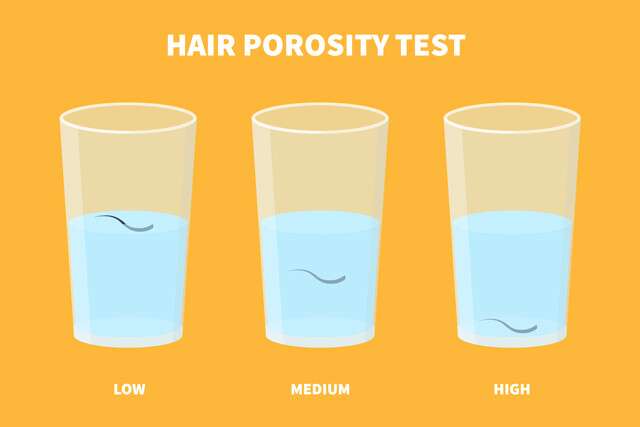you can perform simple at-home tests to get an idea of your hair porosity. Additionally, there are DIY at-home remedies that can help address specific porosity levels. Here's a guide:
DIY Porosity Tests:
1. Float Test:
- Method: Take a few strands of clean, shed hair and place them in a bowl of water.
-
Results:
- High Porosity: Hair quickly sinks as it absorbs water.
- Low Porosity: Hair floats on the water's surface.
2. Slip 'n' Slide Test:
- Method: Gently slide your fingers up a single strand of hair from the tip towards the root.
-
Results:
- High Porosity: Hair feels rough and may catch on your fingers.
- Low Porosity: Hair feels smooth and resistant to sliding.
3. Spray Bottle Test:
- Method: Spray a mist of water onto a small section of hair.
-
Results:
- High Porosity: Hair quickly absorbs water.
- Low Porosity: Water beads on the surface and takes longer to be absorbed.
DIY At-Home Remedies:
1. For High Porosity Hair:
- Deep Conditioning: Use protein-rich deep conditioning treatments to strengthen and repair damaged cuticles.
- Leave-In Conditioners: Apply leave-in conditioners or hair oils to seal moisture and prevent excessive water absorption.
- Low-Manipulation Styles: Opt for protective styles to minimize friction and reduce further damage.
2. For Low Porosity Hair:
- Warm Water Rinses: Use warm water to open the hair cuticle during washing to allow better product penetration.
- Clarifying Shampoos: Periodically use clarifying shampoos to remove product buildup that can hinder moisture absorption.
- Lightweight Products: Choose water-based, lightweight products that won't weigh down the hair.
3. For Normal Porosity Hair:
- Balanced Care: Maintain a balanced hair care routine with regular moisturizing and occasional protein treatments.
- Heat Styles: If using heat styling tools, use a heat protectant to shield the hair from damage.
- Protective Styling: Alternate between low and high manipulation styles to maintain a healthy balance.
Remember that individual hair strands may have varying porosities, so it's beneficial to observe different sections of your hair. Additionally, these tests provide general insights and not precise measurements. If you have specific concerns or conditions, consult with a professional hairstylist for personalized advice and treatments.





